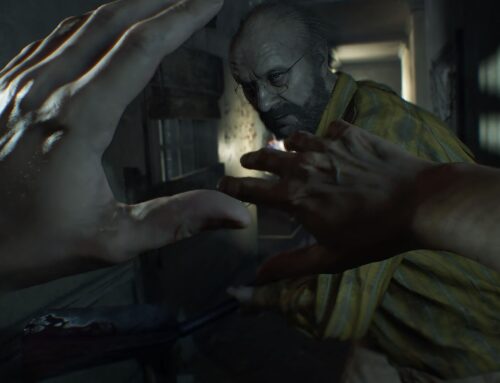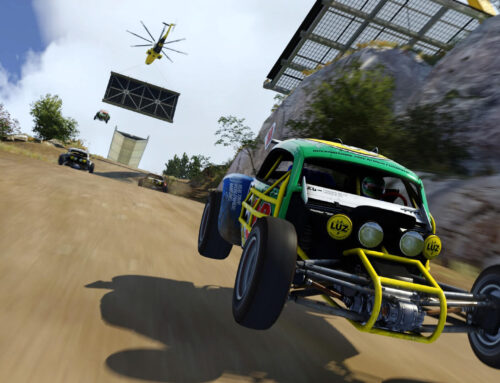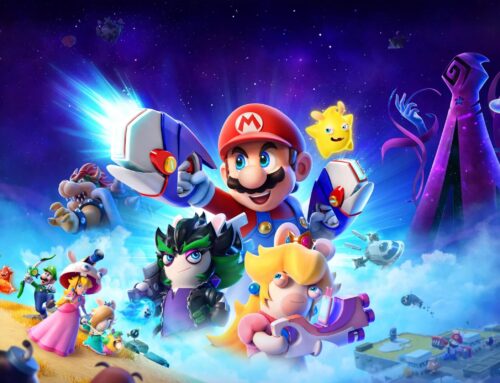The Nintendo 64 was an era-defining console, bringing 3D gaming to the mainstream and delivering some of the most beloved games of all time. Whether you played these titles back in the day or are just now exploring the N64’s legendary library, these Nintendo games represent the pinnacle of what the system had to offer. From groundbreaking platformers to intense multiplayer experiences, here are the 15 best Nintendo 64 games of all time.
Level up your fun with quick and easy Nintendo game keys from Punktid:
The Legend of Zelda: Ocarina of Time
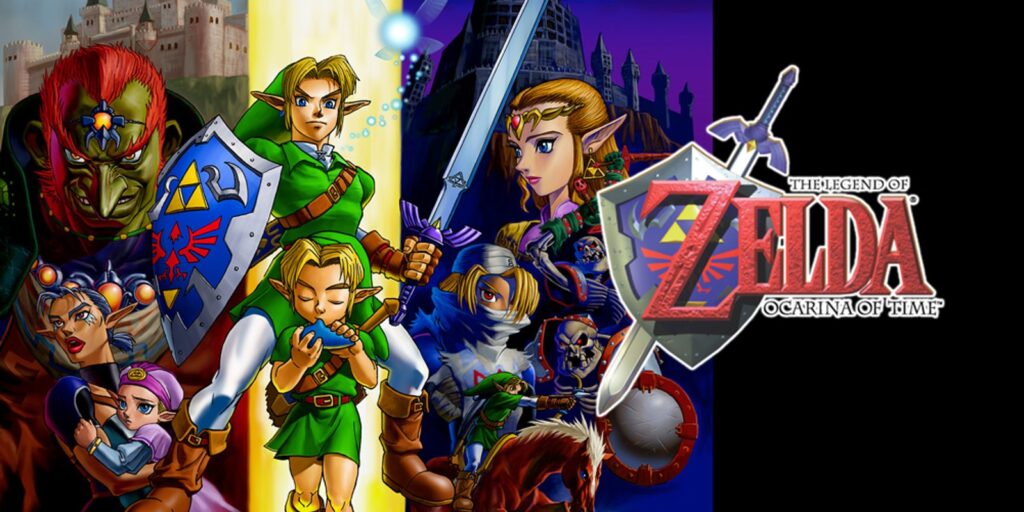
Few games have had the cultural impact of Ocarina of Time. This wasn’t just a game—it was an adventure that set the standard for action-adventure titles for decades to come.
The moment you stepped into Hyrule and heard the sweeping orchestral score, you knew this was something special. The game introduced innovative mechanics like Z-targeting, making 3D combat feel smooth and intuitive.
Every dungeon was a masterclass in design, each presenting unique puzzles, enemies, and bosses that felt both challenging and rewarding. The time-travel mechanic added an extra layer of depth, allowing players to experience the world from both a child’s and an adult’s perspective.
Riding Epona across the vast fields of Hyrule felt revolutionary, giving players a real sense of freedom. The game’s story was rich, emotional, and full of unforgettable moments, from awakening the Seven Sages to the climactic battle against Ganondorf.
Few games have aged as well, and it’s no surprise Ocarina of Time is still considered one of the greatest games ever made.
Super Mario 64
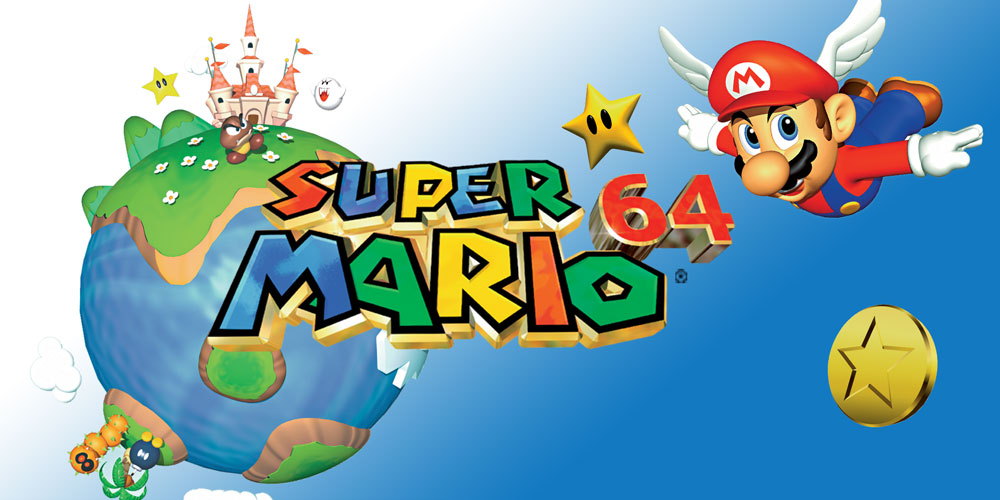
Before Super Mario 64, no one really knew what a 3D platformer should be. Then, Nintendo launched this game, and it changed everything.
Mario had never felt more alive, with fluid controls, acrobatic moves, and a camera system that, while primitive by today’s standards, was groundbreaking at the time.
The game replaced linear levels with open-world environments, allowing players to approach challenges in multiple ways. Collecting Power Stars wasn’t just about reaching the goal—it was about exploration, experimentation, and mastering Mario’s moveset.
Levels like Bob-omb Battlefield and Whomp’s Fortress became instant classics, while others, like Tick Tock Clock and Rainbow Ride, tested the limits of player skill. The castle itself was more than just a hub—it was a playground, full of hidden secrets and surprises.
Who didn’t spend hours trying to reach the top of the castle just to see Yoshi? Even decades later, Super Mario 64 remains the gold standard for 3D platformers, influencing countless games that followed.
The Legend of Zelda: Majora’s Mask
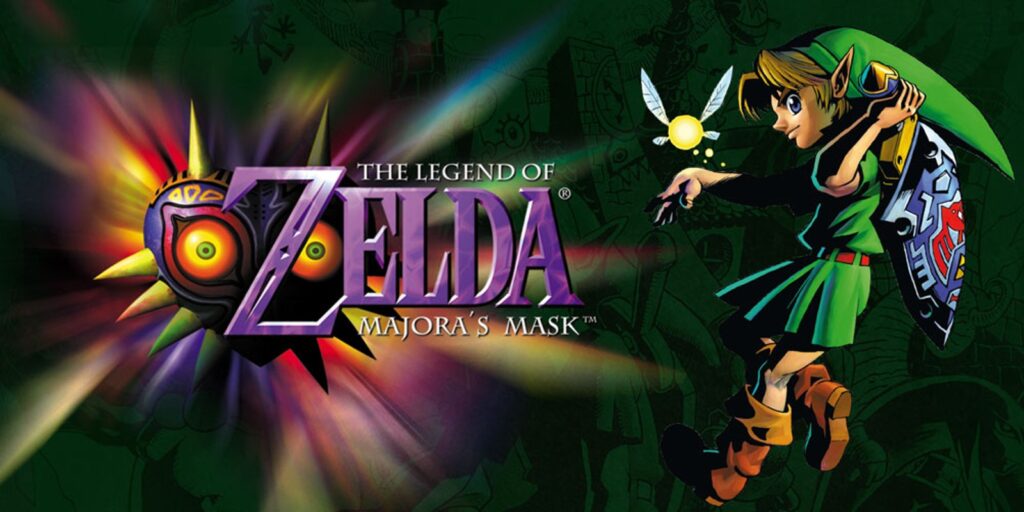
While Ocarina of Time was an epic adventure, Majora’s Mask was an eerie, emotional journey into darkness. This game took risks, introducing a three-day cycle that forced players to manage time wisely.
The world of Termina was haunting, filled with characters who had schedules, problems, and tragedies that unfolded in real-time. The ability to transform into a Deku, Goron, or Zora gave Link new abilities and changed the way players navigated the world.
The game’s dungeons were fewer in number but packed with intricate puzzles and unique mechanics. The atmosphere was oppressive, with the moon’s sinister face looming ever closer, reminding players of their impending doom.
The side quests were some of the best in any Zelda game, rewarding players with deeply emotional stories rather than just items. The game’s themes of grief, loss, and acceptance made it one of the most mature and thought-provoking entries in the series.
Every playthrough felt different because of the time loop, encouraging players to explore every corner of Termina. Majora’s Mask may have been different from its predecessor, but it cemented itself as a masterpiece in its own right.
GoldenEye 007
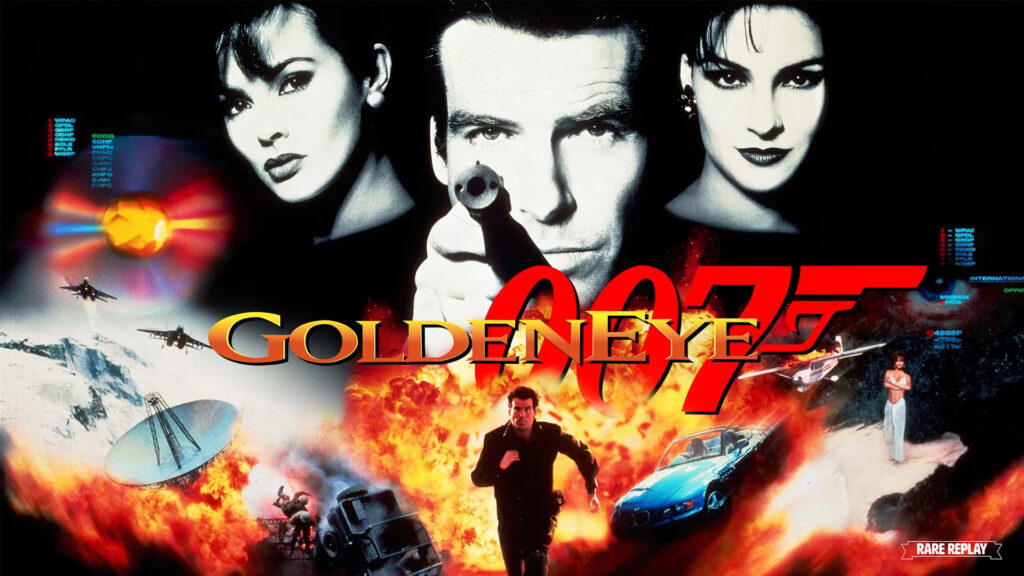
Before GoldenEye 007, first-person shooters on consoles were rare, and none were as refined as their PC counterparts. Then Rare came along and changed the game.
The single-player campaign was surprisingly deep, featuring varied mission objectives beyond just shooting enemies. The AI was impressive for its time, reacting to sound and taking cover.
But let’s be honest—GoldenEye is remembered most for its legendary multiplayer mode. Four-player split-screen battles became a staple of gaming sleepovers, with players setting custom rules like “Slappers Only” or banning the Golden Gun.
Every map, from Facility to Complex, was perfectly designed for tense firefights and last-minute escapes. The controls were unconventional by today’s standards, but once mastered, they felt incredibly smooth.
The game rewarded both stealth and run-and-gun playstyles, giving players multiple ways to approach missions. The soundtrack, inspired by classic Bond films, added to the cinematic feel of the game.
Even with all the advancements in first-person shooters, GoldenEye 007 remains one of the most beloved multiplayer experiences ever.
Perfect Dark
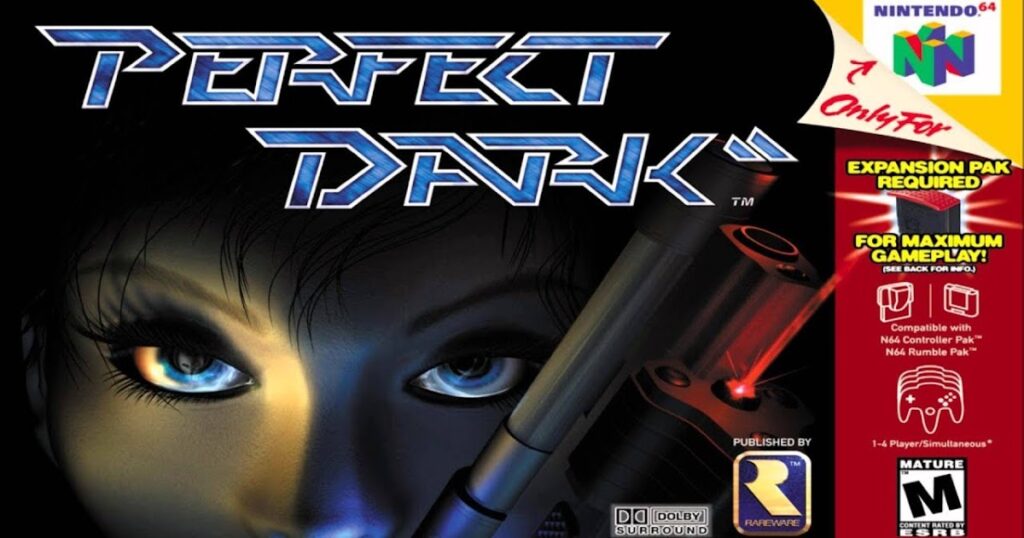
If GoldenEye 007 laid the groundwork, Perfect Dark refined it into something even better. Rare took everything that made GoldenEye great and improved it in every way.
The game introduced a futuristic espionage storyline starring Joanna Dark, one of gaming’s coolest protagonists. The campaign was deeper, with more varied objectives, better AI, and an expanded arsenal of weapons.
Speaking of weapons, Perfect Dark had some of the most creative guns ever seen in an FPS, including the laptop gun, which doubled as a sentry turret. The multiplayer was even bigger than GoldenEye, with the introduction of bots, customizable settings, and a wider selection of maps.
The game pushed the N64 to its limits, requiring the Expansion Pak for full functionality. The sci-fi setting allowed for more imaginative level design, including missions inside alien spacecrafts.
The multiplayer was packed with modes and options, ensuring endless replayability. Rare managed to outdo themselves, making Perfect Dark one of the most polished shooters on the N64.
Banjo-Kazooie
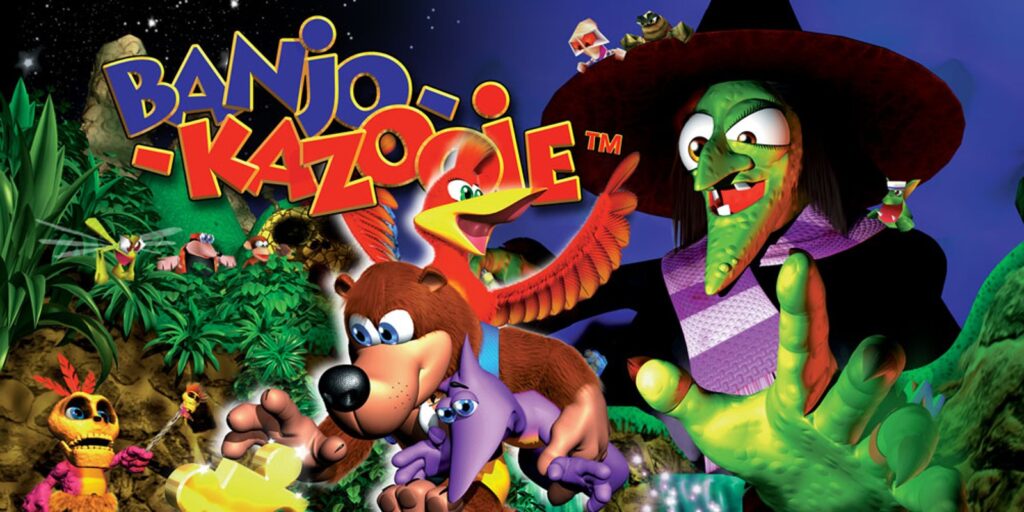
While Super Mario 64 may have pioneered 3D platforming, Banjo-Kazooie perfected it in many ways. The game featured a dynamic duo—Banjo, the laid-back bear, and Kazooie, his wisecracking bird companion.
The humor was sharp, with self-aware dialogue and a villain, Gruntilda, who spoke entirely in rhymes. The levels were massive and filled with things to collect, but unlike later “collectathons,” they never felt tedious.
Each world was brimming with personality, from the pirate-themed Treasure Trove Cove to the spooky Mad Monster Mansion. The game’s unique transformation mechanic let Banjo change into different creatures, adding variety to exploration.
The moveset was deeper than Mario’s, with special abilities that were gradually unlocked throughout the adventure. The music, composed by Grant Kirkhope, was some of the catchiest in gaming history.
The game’s vibrant visuals and charming characters made it feel like a living cartoon. Banjo-Kazooie didn’t just copy Mario 64—it carved out its own identity as one of the best platformers of all time.
Mario Kart 64
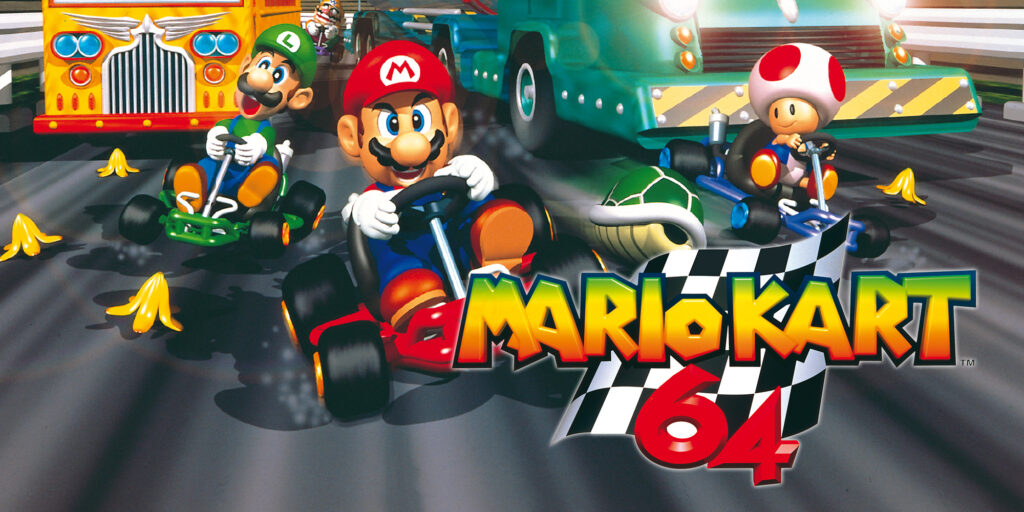
Few games have caused as many friendships to be tested as Mario Kart 64. This was the game that turned casual racing into a party phenomenon, with four-player split-screen madness that kept players coming back for more.
The introduction of 3D tracks was a massive leap from the SNES original, bringing in hills, jumps, and wider courses that felt more dynamic than ever before.
Power-sliding around corners became second nature, and mastering the technique was key to shaving off precious seconds. The item system made every race unpredictable—just when you thought you had the lead, a well-placed blue shell could ruin everything.
Tracks like Rainbow Road, Bowser’s Castle, and Wario Stadium became legendary, with shortcuts that required skill and guts to pull off. And let’s not forget Battle Mode, where the goal wasn’t to win a race but to pop your friends’ balloons in pure chaotic fun.
Whether playing against the AI or three other players, Mario Kart 64 had an unmatched sense of competition and excitement. It may not have had the refined mechanics of later entries, but its simplicity made it timeless.
Even today, players still fire up their N64s for one more lap around Moo Moo Farm.
Super Smash Bros.
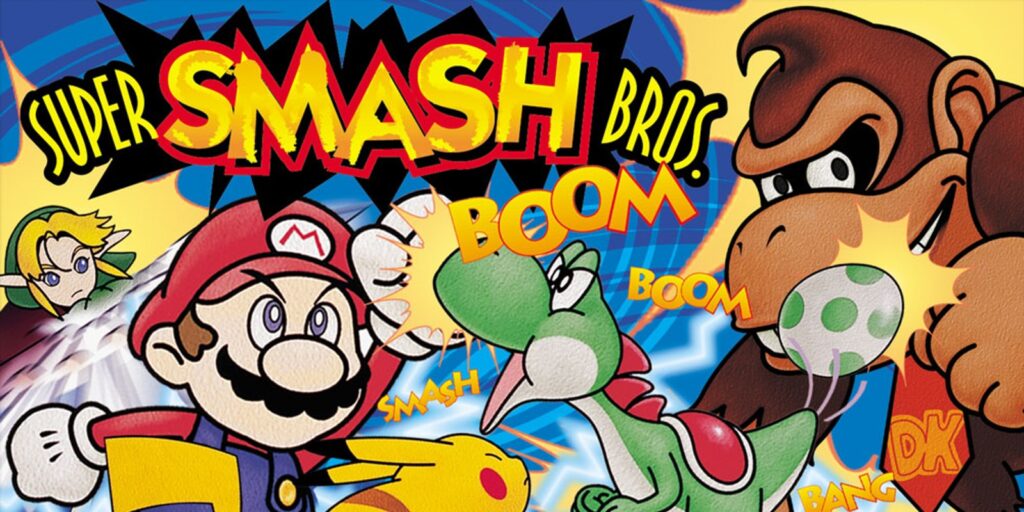
No one saw Super Smash Bros. coming. A fighting game featuring Mario, Link, Pikachu, and other Nintendo icons? It sounded absurd on paper, but the moment players got their hands on it, they were hooked.
Unlike traditional fighters, which relied on health bars, Smash Bros. introduced a percentage-based damage system that made knockouts feel dynamic and thrilling.
The roster of 12 characters each had their own distinct moves, from Kirby’s copy ability to Captain Falcon’s devastating Falcon Punch. The game’s stages were interactive, featuring hazards that could turn the tide of a battle in an instant.
Four-player matches were chaotic, with items like Poké Balls and hammers making every fight unpredictable. The game’s commercial, featuring Mario and friends in a field before breaking into a brawl, perfectly captured the spirit of Smash Bros.
Multiplayer quickly became the heart of the game, leading to endless rivalries and rematches among friends. Even with later sequels refining the formula, the original Super Smash Bros. laid the foundation for one of Nintendo’s most successful franchises.
It wasn’t just a fighting game—it was a celebration of Nintendo history.
Star Fox 64
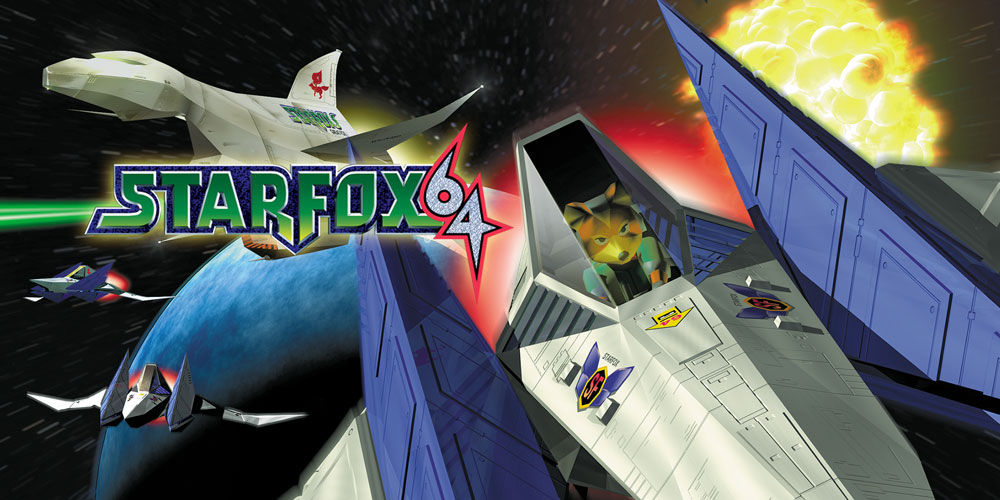
“Do a barrel roll!” became one of the most iconic phrases in gaming, and it all started with Star Fox 64. This on-rails shooter was a technical showcase for the N64, featuring voice acting, cinematic storytelling, and fast-paced aerial combat.
Players took control of Fox McCloud, leading his squadron through a series of branching missions to defeat the evil Andross. The game rewarded skilled play, with hidden paths and secret objectives that encouraged multiple playthroughs.
Each team member—Falco, Slippy, and Peppy—had distinct personalities, adding to the game’s charm. The dogfights were thrilling, with tight controls that made every maneuver feel precise. Boss battles were intense, requiring quick reflexes and smart shooting to overcome.
The game also introduced the Landmaster tank and Blue Marine submarine, adding variety to the gameplay. Multiplayer battles let players take their dogfighting skills to the next level, proving who was the best pilot among friends.
Even today, Star Fox 64 remains the gold standard for the franchise, with later entries struggling to capture the same magic.
Paper Mario
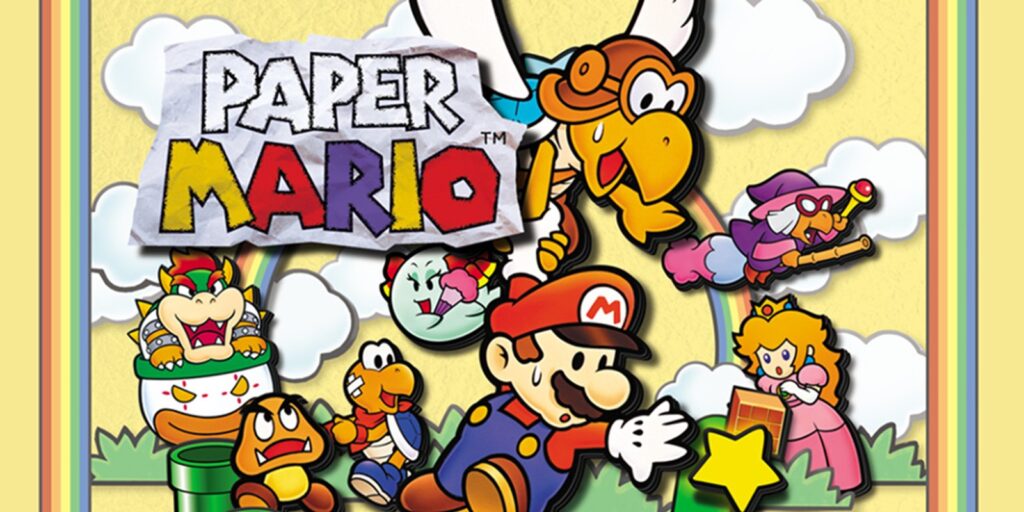
After Super Mario RPG, fans wanted another Mario-themed RPG, and Paper Mario delivered something truly unique. The art style was charming, making everything look like a living storybook, with 2D characters in a 3D world.
The combat system was turn-based but interactive, requiring precise timing for attacks and blocks. Instead of traditional party members, Mario was joined by quirky partners like Goombario, Bombette, and Parakarry, each with their own special abilities.
The game’s writing was hilarious, filled with witty dialogue and self-aware humor that made it stand out from other RPGs. The world was vast and filled with secrets, from hidden badges to optional bosses that tested your skills.
Each chapter introduced a fresh setting, whether it was a haunted forest, a desert town, or a floating city in the sky. The battle mechanics encouraged strategy, rewarding players for mastering timed button presses.
The story, while simple, had plenty of twists and memorable moments, including the ability to play as Princess Peach between chapters. Paper Mario proved that an RPG didn’t need to be overly complex to be engaging, and it remains a fan favorite to this day.
Diddy Kong Racing
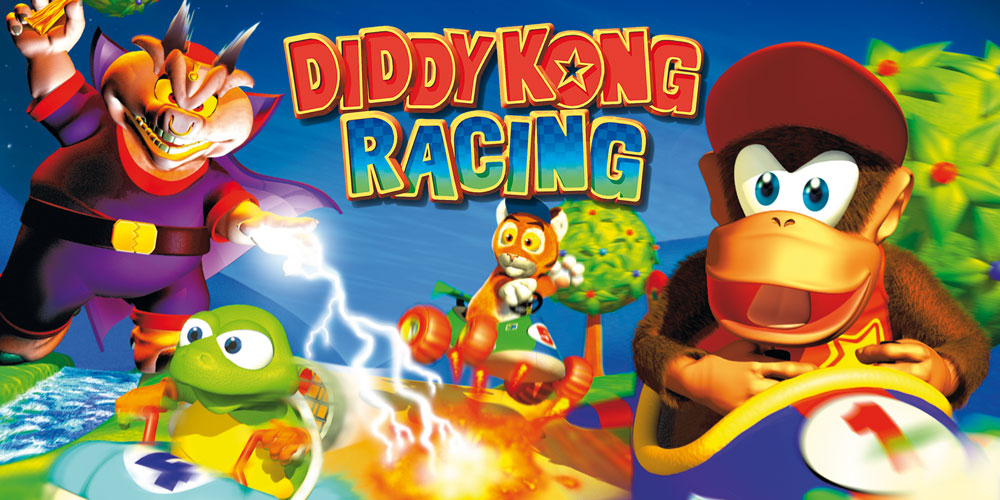
While Mario Kart 64 may have dominated the racing scene, Diddy Kong Racing dared to be different—and it paid off. Instead of just karts, players could race in three different vehicles: cars, hovercrafts, and planes, each with unique handling.
The Adventure Mode set it apart, giving players a full-fledged single-player experience complete with bosses, time trials, and hidden challenges. The game introduced memorable characters like Banjo (before Banjo-Kazooie) and Conker (before Conker’s Bad Fur Day).
Tracks were designed with variety in mind, from icy caverns to active volcanoes, keeping races exciting. The silver coin challenge added an extra layer of difficulty, forcing players to collect coins while staying ahead of opponents.
Multiplayer was just as fun, allowing players to take their skills against friends in races or battle modes. The music was catchy and energetic, fitting perfectly with the colorful world. The final boss race against Wizpig was one of the most intense challenges in any N64 game.
Diddy Kong Racing was more than just a kart racer—it was a full-fledged adventure that set a new standard for the genre.
F-Zero X
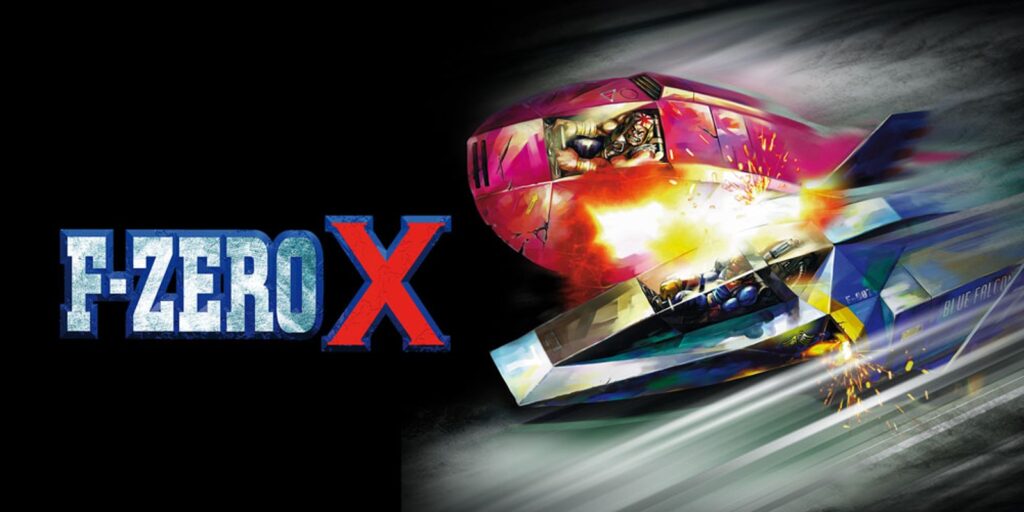
Speed. Pure, unrelenting speed. F-Zero X took the high-speed racing of the SNES original and cranked it up to 11, delivering one of the fastest experiences on the N64. The game featured 30 racers on-screen at once, each fighting for position at breakneck speeds.
The controls were tight, making every turn, boost, and jump feel incredibly satisfying when executed correctly. The randomized track generator kept things fresh, ensuring that no two races felt exactly the same.
The soundtrack was a heavy metal masterpiece, perfectly matching the high-energy gameplay. The game didn’t hold your hand—tracks were brutal, with hairpin turns, bottomless pits, and deadly jumps.
Mastering the boost system was key, as using too much could leave you vulnerable to elimination. Multiplayer races were exhilarating, with friends battling it out for first place in chaotic high-speed showdowns.
While the game lacked a traditional story mode, its sheer adrenaline-fueled gameplay made it a must-play for racing fans. F-Zero X was a game that demanded skill, and those who mastered it were rewarded with one of the most thrilling racing experiences ever.
Wave Race 64
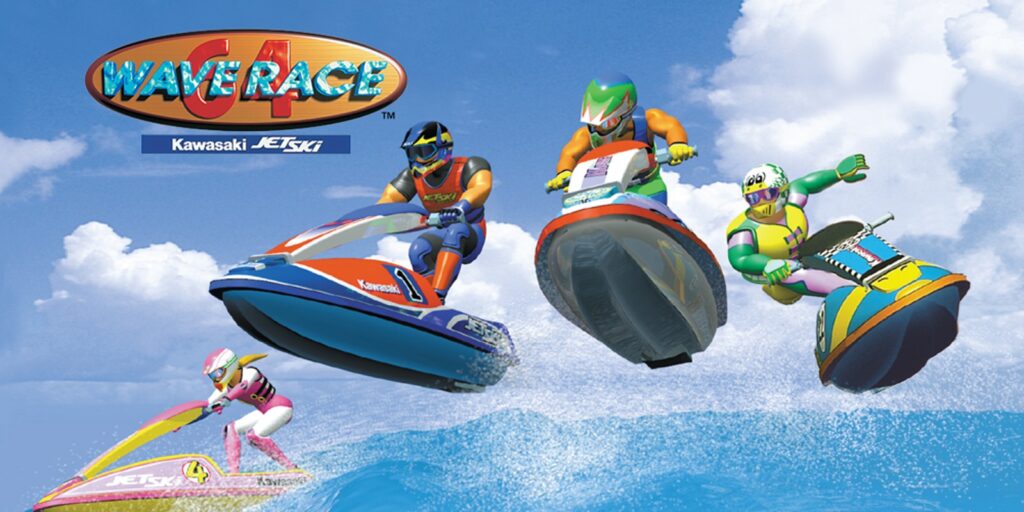
A racing game with jet skis? It might not have sounded exciting at first, but Wave Race 64 turned out to be one of the most innovative racing games of its time. The real star of the game was the water physics, which were astonishingly realistic for the N64 era.
Waves weren’t just visual effects—they actively affected your movement, requiring players to adjust their steering and balance in real-time. Each course had its own challenges, from calm waters to stormy seas with massive waves.
The controls were tight, making every turn and jump feel precise. The game’s buoy system forced players to master strategic navigation instead of just flooring it. The dynamic weather system made each race feel different, with water conditions changing mid-race.
Time trials and stunt modes added even more depth, rewarding skilled players for pulling off insane tricks. The soundtrack was upbeat and perfectly complemented the game’s tropical vibe.
Wave Race 64 proved that water-based racing could be just as exciting as traditional road racing. Even today, it remains one of the best examples of how physics can define a racing game.
Resident Evil 2
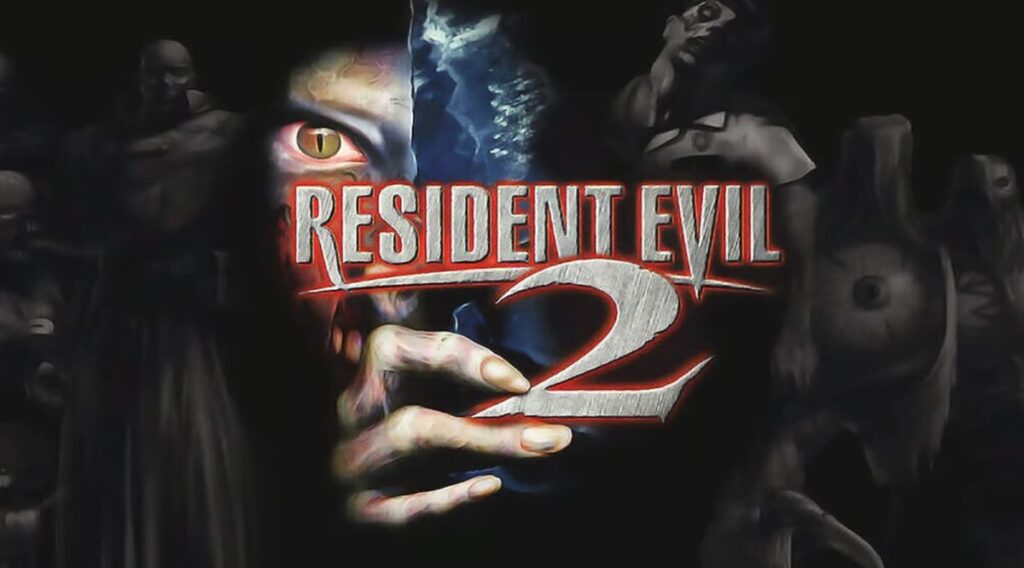
Survival horror on the N64? It seemed impossible, but Resident Evil 2 proved that even a cartridge-based console could deliver a terrifying cinematic experience.
This was an incredible technical achievement, compressing two CDs worth of PlayStation content into a single N64 cartridge without sacrificing much of the experience.
The game followed Leon S. Kennedy and Claire Redfield as they attempted to escape Raccoon City during a zombie outbreak. Unlike the pre-rendered backgrounds of the PlayStation version, the N64 version used real-time rendering, allowing for subtle visual enhancements.
The tank controls and limited ammunition made every encounter feel tense, forcing players to carefully manage resources. The branching storylines and multiple endings gave the game immense replay value, making every playthrough slightly different.
The atmosphere was thick with dread, with eerie sound design and dimly lit corridors keeping players on edge. The game introduced some of the most iconic moments in the Resident Evil franchise, including the relentless pursuit of the terrifying Tyrant (Mr. X).
The addition of an exclusive randomizer mode in the N64 version kept players on their toes, mixing up item locations to ensure no two playthroughs were the same.
Even on a console not known for horror games, Resident Evil 2 delivered one of the most unforgettable experiences of its generation.
WWF No Mercy
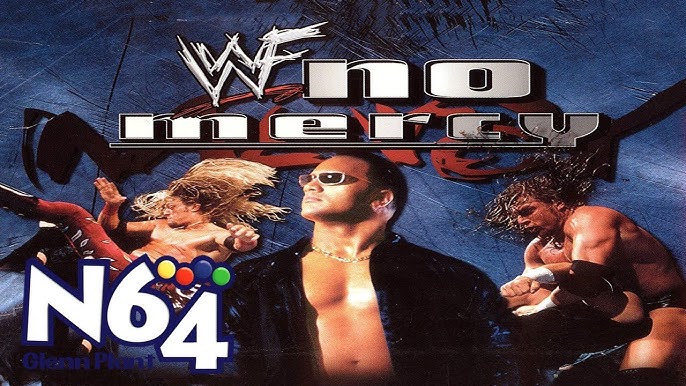
Professional wrestling games had existed before WWF No Mercy, but none came close to capturing the drama and excitement of the sport quite like this one.
Developed by AKI Corporation, this was the pinnacle of N64 wrestling games, featuring an intuitive grappling system that was easy to learn but had surprising depth.
Unlike button-mashing brawlers, No Mercy rewarded strategy, with players needing to weaken opponents before going for the pin.
The roster was stacked with WWE legends like The Rock, Stone Cold Steve Austin, Triple H, and The Undertaker, each with their signature moves and taunts.
The game featured an expansive single-player Championship Mode, where choices affected the storyline and led to multiple branching paths. Players could create their own wrestlers with a robust customization system that was ahead of its time.
Multiplayer was where No Mercy truly shined, allowing four players to engage in chaotic matches with ladders, steel chairs, and even backstage brawls.
The animations were smooth, and every match felt like an actual wrestling event, complete with entrances and dramatic finishers. Unlike many other sports games of the time, No Mercy had depth that kept players engaged long after they had mastered the basics.
The game is still considered the gold standard for wrestling games, and fans continue to mod it to this day to keep it alive.
Final Thoughts
The Nintendo 64 was home to some of the most groundbreaking and beloved games in history.
Whether it was the revolutionary 3D platforming of Super Mario 64, the cinematic storytelling of The Legend of Zelda: Ocarina of Time, or the multiplayer madness of GoldenEye 007, the N64 had something for everyone.
Even today, these games remain enjoyable and influential, setting the foundation for modern gaming. Some of them pioneered mechanics still used in today’s titles, while others simply perfected existing genres in ways that few games since have managed to replicate.
The N64 may not have had the largest library, but it was packed with quality, delivering experiences that remain just as fun decades later. Whether you’re revisiting these classics or discovering them for the first time, they stand as a testament to a golden era of gaming.





